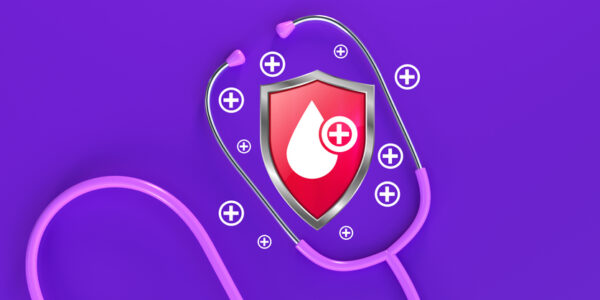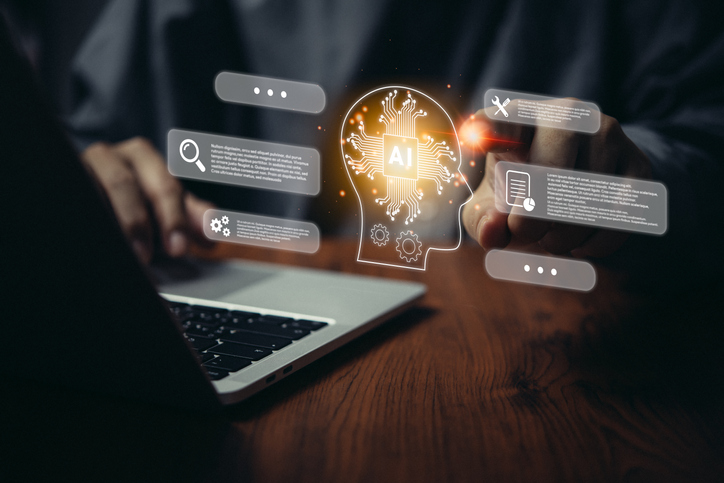
In recent years, diabetes management has undergone a remarkable transformation with the rise in continuous glucose monitors (CGMs). These devices present patients with an easier way to maintain glycemic levels over the traditional finger prick approach. However, a deeper understanding of this category of devices, and what they are measuring, is critical for optimal diabetes management.
Traditional finger prick devices, called blood glucose monitors or BGMs, have been commercialized for decades and directly measure glucose from the blood capillaries in one’s finger. While they are very accurate, they only provide a single reading at a point in time, so it is not possible to know if the glucose is rising or falling and how rapidly. Alternatively, commercial CGM devices measure glucose within interstitial fluid – the fluid that surrounds cells. These systems provide continuous readings along with trend information, so it is now possible to know the direction and speed of glucose levels.
When evaluating these two approaches, patients should carefully consider the limitations of each. The next evolution in glucose monitoring will need to address the fundamental limitations of both BGM and CGM to continue to transform diabetes care.

The Power of One: Redefining Healthcare with an AI-Driven Unified Platform
In a landscape where complexity has long been the norm, the power of one lies not just in unification, but in intelligence and automation.
Location matters: Key challenges of blood glucose and interstitial fluid monitoring
One key difference between blood glucose monitoring and interstitial fluid monitoring lies in their measurement location and how this location informs the glucose reading. As mentioned, blood glucose monitoring provides a direct measurement of glucose from the blood capillaries and reflects the most current glucose concentration. Interstitial fluid monitoring measures the glucose levels in the fluid in the surrounding fat cells underneath one’s skin and provides an indication of the glucose concentration within the subcutaneous tissue.
Perhaps the most significant impact that measuring in blood versus interstitial fluid presents is the time lag. Interstitial fluid readings can lag up to 15 minutes behind actual blood glucose readings during periods of rapid change. This delay in readings occurs due to glucose entering the bloodstream first, eventually being diffused from capillaries into the interstitial fluid.
Although CGM technologies have revolutionized the convenience of glucose monitoring by providing large amounts of continuous data, a challenge that remains is capturing accurate, non-delayed readings during periods of rapid glucose change. Such periods occur when eating, exercising, and during times of stress and illness. For patients making daily insulin dosing decisions, these rapid rises and falls aren’t just an academic matter; rather, they directly impact health outcomes and quality of life.
Understanding this time lag is critical, especially for patients using automated insulin delivery systems who may experience delayed adjustments during these dynamic periods. This time lag creates a significant gap for individuals with variable glucose patterns. By avoiding such delays when these fluctuations occur, patients can make better informed decisions around their diabetes management and ensure they are getting a more precise dose of insulin.
One emerging technology that addresses the challenge of time lag is Continuous Blood Glucose Monitoring (CBGM). Like the finger prick BGM approach, this technology also measures blood glucose but does so on a continual basis similar to CGM. It therefore captures the benefits of both approaches: continuous measurement of glucose data without any time lag.
Clinical impact on diabetes management
CGM technology enables patients to receive real-time alerts when glucose levels approach dangerous thresholds. For example, research has found that patients who transitioned from finger pricking to CGM saw a significant improvement in their glycemia, with mean HbA1c levels improved from 11.2% to 7.0%. Another study published by Diabetes found that CGMs reduced diabetes-related hospitalization costs by $329.53 per person per month. Alerts, glucose trends, and increased glucose values combined drive overall improvements in patient care. Newer technologies, like CBGM, will likely accelerate these benefits even further by providing real-time glucose data that is not impacted by the time lag and thus could reduce both the medical and psychological burden of diabetes management.
- Hypoglycemia detection – Frequent and reliable glucose measurements and alerts can help prevent hypoglycemic events – periods of times where blood glucose is dangerously low. These hypoglycemic events can lead to serious immediate complications such as fatigue, dizziness, loss of consciousness and, in worst cases, coma. CBGM technology continuously provides real-time blood glucose values allowing patients to be more responsive to these low glucose events, facilitating earlier interventions (such as drinking orange juice) to avoid serious complications.
- Hyperglycemia detection – Frequent and reliable glucose measurements and alerts can also help prevent hyperglycemic events – periods of times where blood glucose is too high. The cumulative amount and duration of these hyperglycemic events can lead to serious long-term complications such as ketoacidosis, kidney problems, nephropathy, retinopathy, and even limb amputation and blindness. Again, CBGM technology continuously provides real-time blood glucose values allowing patients to be more responsive to these high glucose events, facilitating earlier interventions (such as dosing with insulin) to minimize the amount of time spent in a hyperglycemic state.
Today, people living with diabetes have several ways of monitoring glucose levels, whether through finger pricks or CGMs. Both ways of measuring glucose levels have benefits and limitations.
Technological advancements, such as continuous blood glucose monitoring, attempt to combine the real-time accuracy of direct blood measurement with the increased data, trends and alerts of continuous monitoring. Such innovations are not merely incremental – they represent a fundamental shift in how we approach diabetes management, moving from periodic snapshots (BGM) beyond continuous monitoring (CGM) and further on to real-time continuous data (CBGM). By addressing persistent patient pain points like device replacement, on-body wearables and the mental burden of diabetes management, next-generation CBGMs could significantly transform the patient experience.
Beyond just improved clinical outcomes, next-generation technologies could reduce some of the burden of glucose management, therefore improving life for patients with diabetes.
Photo: MURAT GOCMEN, Getty Images
Paul V Goode, PhD is President & CEO of Glucotrack, Inc., a MedTech company focused on the design, development, and commercialization of novel technologies for people with diabetes. Paul is a highly accomplished medical device executive with extensive experience spanning operations and product development, from concept to global commercialization, specializing in diabetes.
This post appears through the MedCity Influencers program. Anyone can publish their perspective on business and innovation in healthcare on MedCity News through MedCity Influencers. Click here to find out how.









